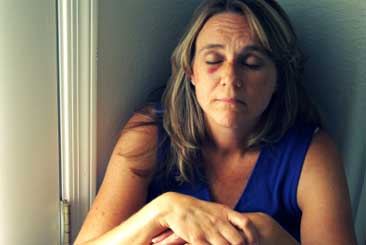|
|
| US Ranks Third For Women And Sexual Violence |
| By Leonard A. Sipes, Jr. |
| Published: 07/02/2018 |

Introduction There are three new sources of data from the National Academies of Science, Thompson Reuters, and Gallup that provide insight into sexual harassment and assault and the overall well-being of women in America. Article I just wrote about the #MeToo movement and offender accountability focusing on the influences of the larger society. My observations are based on an article in the Huffington Post citing data suggesting that organizational culture rather than individual acts was the most potent predictor of sexual harassment. “…a major study from the National Academies of Sciences, Engineering, and Medicine outlines a more comprehensive way of looking at sexual harassment within organizations and identifies the strongest predictor of such behavior. Surprisingly, it has little to do with individual perpetrators. The study finds that the strongest, most potent predictor of sexual harassment is essentially the culture of the company ― what the researchers call “organizational climate,” Crime in America. If you substitute “organizational” for “societal,” the same premise applies. We cannot separate the condition of women and crime in America without examining safety. New Studies We have new studies that offer data as to countries, the safety of women and fear of crime. The collective premise is that full equality for women and safety are intertwined. Criminologists and pollsters have argued that crime destroys everything in its path from education to economic development to how a city feels about itself. Without a sense of safety, society falters. This clearly applies to women’s rights. Without an assurance of safety, the progress of women is endangered. Thomson Reuters Thomson Reuters Foundation-“India is the world’s most dangerous country for women due to the high risk of sexual violence and being forced into slave labor, according to a poll of global experts…” “War-torn Afghanistan and Syria ranked second and third in the Thomson Reuters Foundation survey of about 550 experts on women’s issues, followed by Somalia and Saudi Arabia.” “The only Western nation in the top 10 was the United States, which ranked joint third when respondents were asked where women were most at risk of sexual violence, harassment, and being coerced into sex,” Thomson Reuters. Gallup (direct quotes rearranged for readability) Only 64 percent of US women feel safe walking alone at night where they live. The final communique for the recent G7 summit in Canada included pledges to work toward removing barriers for women in social, economic and political areas, and resolutions to end sexual and gender-based violence. Gallup data suggest that a lot of work remains to “make gender inequality history,” particularly in this area. Even among the G7 economic powerhouses, there is a nearly consistent 20-percentage-point gap between men and women on whether they feel safe walking alone at night where they live. While majorities in six of the seven countries feel safe, women are at a disadvantage in all of them. The narrowest gap — 19 points — is in the United Kingdom, where 83% of men feel safe walking alone in their communities at night and 64% of women say the same. The widest gap — 23 points — is in Italy, where 72% of men and 49% of women feel safe. These overall numbers show a staggering difference between how men and women feel in their own communities. As the Council suggested in its recommendations, certain groups of women are at an even further disadvantage. Gallup data show women in low-income households are worse off in their communities when it comes to their perceptions of safety. Both men and women are more likely to feel safe as their household income increases. However, women in the richest 20% of households are still behind men in the poorest 20% of households in the seven most powerful and richest countries in the world. Even in some of the most affluent countries on Earth, wealth is not insulating women from safety concerns. To make gender inequality history when it comes to safety, G7 leaders will need to turn recommendations into action to provide safe spaces for women to live, grow and thrive without fear of psychological, physical or sexual violence. Gallup’s data underscore that such violence hits poorest women — who are already at a further disadvantage — the hardest. These women may be less likely to come forward because of potential consequences, such as losing their job at which they are experiencing harassment, Gallup Conclusion The data indicates that the United States has a long way to go as to the well-being of girls and women. Safety and the progress of women are linked. Maybe it’s time to take the issue of sexual harassment and assault seriously through societal and justice initiatives. We’ve been able to reduce drinking and driving, domestic violence, drug use (beyond marijuana) and other forms of illegalities through public opinion. It’s time to employ the same strategies regarding the safety of girls and women. Reprinted with permission from http://www.crimeinamerica.net. Contact us at crimeinamerica@gmail.com or for media on deadline, use leonardsipes@gmail.com. Leonard A. Sipes, Jr has thirty-five years of experience supervising public affairs for national and state criminal justice agencies. He is the Former Senior Specialist for Crime Prevention for the Department of Justice’s clearinghouse and the Former Director of Information Management for the National Crime Prevention Council. He has a Post Master’s degree from Johns Hopkins University and is the author of the book "Success With the Media". He can be reached via email at leonardsipes@gmail.com. |
MARKETPLACE search vendors | advanced search

IN CASE YOU MISSED IT
|


Comments:
No comments have been posted for this article.
Login to let us know what you think